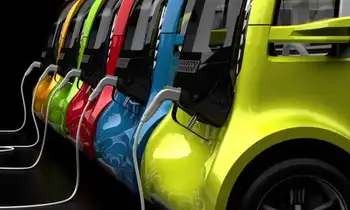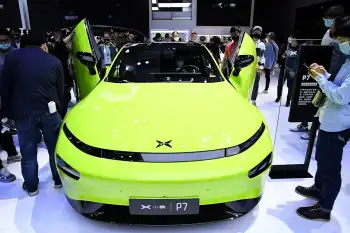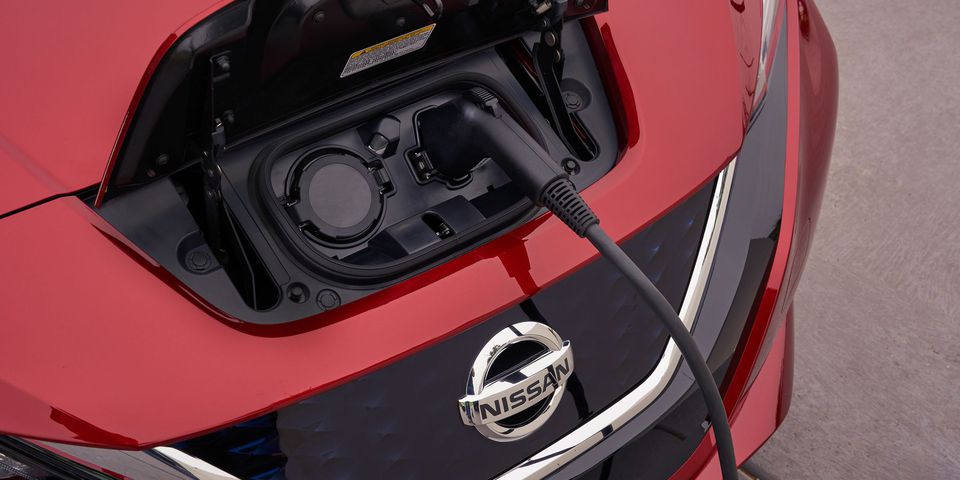Local study to look at how e-trucks might supply future electricity

Protective Relay Training - Basic
Our customized live online or in‑person group training can be delivered to your staff at your location.

- Live Online
- 12 hours Instructor-led
- Group Training Available
Electrified Trucking Grid Integration explores vehicle-to-grid (V2G) strategies where rolling batteries backfeed power during peak demand, optimizing charging infrastructure, time-of-use pricing, and IESO market operations for Ontario shippers like Nature Fresh Farms.
Key Points
An approach using V2G-enabled electric trucks to support the grid, cut peak costs, and add revenue streams.
✅ Models charging sites, timing, and local grid impacts.
✅ Evaluates V2G backfeed economics and IESO pricing.
✅ Uses Nature Fresh Farms data for logistics and energy.
A University of Windsor project will study whether an electrified trucking industry might not only deliver the goods, but help keep the lights on with the timely off-loading of excess electrons from their powerful batteries via vehicle-to-grid approaches now emerging.
The two-year study is being overseen by Environmental Energy Institute director Rupp Carriveau and associate professor Hanna Moah of the Cross-Border Institute in conjunction with the Leamington-based greenhouse grower Nature Fresh Farms.
“The study will look at what happens if we electrified the transport truck fleet in Ontario to different degrees, considering the power demand for truck fleets that would result,” Carriveau said.
“Where trucks would be charging and how that will affect the electricity grid grid coordination in those locations at specific times. We’ll be able to identify peak times on the demand side.
“On the other side, we have to recognize these are rolling batteries. They may be able to backfeed the grid, sell electricity back to prop the grid up in locations it wasn’t able to in the past.”
The national research organization Mathematics of International Technology and Complex Systems (Mitacs) is funding the $160,000 study, and the Independent Electricity Systems Operator, a Crown corporation responsible for operating Ontario’s electricity market, amid an electricity supply crunch that is boosting storage efforts, is also offering support for the project.
Because of the varying electricity prices in the province based on usage, peak demand and even time of year, Carriveau said there could be times where draining off excess truck battery power will be cheaper than the grid, and vehicle-to-building charging models show how those savings can be realized.
“It could offer the truck owner another revenue stream from his asset, and businesses a cheaper electricity alternative in certain circumstances,” he said.
The local greenhouse industry was a natural fit for the study, said Carriveau, based on the amount of work the university does with the sector along with the fact it is both a large consumer and producer of electricity.
The study will be based on assumptions for electric truck capacity and performance because the low number of such vehicles currently on the road, though large electric bus fleets offer operational insights.
How will an electrified trucking industry affect Ontario’s electricity grid? University of Windsor engineering professor Rupp Carriveau is part of a new study on trucks being used to help deliver electricity as well as their products around Ontario. He is shown on campus on Tuesday, July 6, 2021.
How will an electrified trucking industry affect Ontario’s electricity grid? University of Windsor engineering professor Rupp Carriveau is part of a new study on trucks being used to help deliver electricity as well as their products around Ontario. He is shown on campus on Tuesday, July 6, 2021.
Nature Fresh Farms will supply all its data on power use, logistics, utility costs and shipping schedules to determine if switching to an electrified fleet makes sense for the company.
“As an innovative company, we are always thinking, ‘What is next?’, whether its developments in product varieties, technology or sustainability,” said company CEO Peter Quiring. “Green transportation is the next big focus.
“We were given the opportunity to work closely on this project and offer our operations as a case study to see how we can find feasible alternatives, not only for Nature Fresh Farms or even for companies in agriculture, but for every industry that relies on the transportation of their goods.”
Currently, Nature Fresh Farms doesn’t have any electrified trucks. Carriveau said the second phase of the study might actually involve an electric truck in a pilot project.











